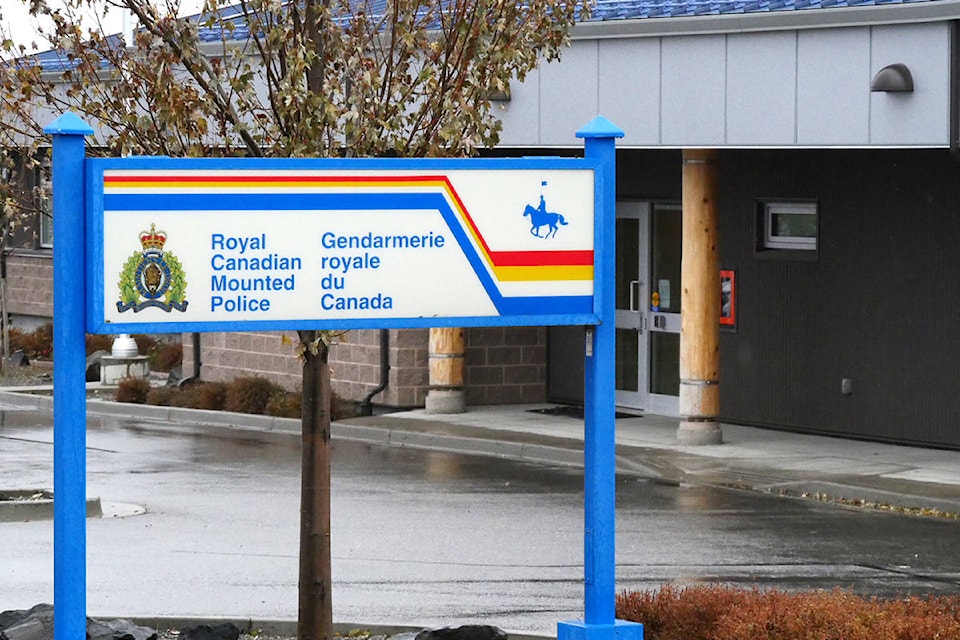In some recent RCMP releases, RCMP noted that a suspect was charged and subsequently released. For example, in one recent case, a prohibited driver, after fleeing and making contact with a fully marked patrol vehicle, was charged and released from custody after the initial investigation.
“We have to weigh a certain amount of factors when we look at trying to release somebody,” says Staff Sgt. Svend Nielsen. “Do they have a history of attending court or not attending court, what their criminal history is, being a primary concern, what the offence is, what we would consider dangerous considering our everyday work in the community versus what someone on the outside might consider dangerous. Weighing those things out typically lead us in a certain direction.”
The Canadian system is differerent from the U.S. system, says Thompson Rivers University associate professor Robert Diab.
“The first thing to say is that in the early 1970s, pursuant to the ‘Bail Reform Act,’ Canada adopted a different system for bail and pre-trial release than is common in the United States. Generally, in the US, when police arrest a suspect and decide to charge them, they are brought into custody and not released without some form of bail — and often cash bail.”
In Canada, under the Criminal Code, the preference is for release at the earliest opportunity and without cash bail — unless certain conditions apply, according to Diab.
“So, when the police arrest a suspect for an offence in the field or on the street, they ascertain the suspect’s identity and (ideally) check whether they have a criminal record and/or outstanding warrants.”
Diab explains that the Criminal Code (495(2)) says that at that point, the police officer should release the person at the scene unless:
- It’s a very serious offence;
- They can’t be sure of the person’s identity;
- They’re not sure if the person will come to court if released;
- Releasing them will result in their continuing or repeating the offence at issue, or committing another offence; or
- Releasing will endanger a witness.
“To assess the last two points, the officer will consider the person’s criminal record.”
“The rather minor incident where there was some contact with our police vehicle… didn’t really result with us in danger or anything like that, outside of the members in the patrol car, but the contact was fairly light with us,” says Nielsen. “In essence combined with that and the person’s history or lack of history and just our ability to try and detain them for that type of offence just wouldn’t be something we’d be able to do. That’s why we proceeded with the release.”
If the officer decides not to release at the scene, he or she will bring the suspect to the station, where the Criminal Code gives the “officer in charge” a second opportunity to consider release, according to Diab. The criteria here is similar, but the officer in charge can require a cash “recognizance” to release the person on bail.
“More typically, if the person is arrested at the scene and it’s a serious offence or they have a significant record, police will hold the person in custody until they can be brought to court the next morning to appear before a judge (or, if it’s the weekend, appear by telephone before a judicial justice of the peace). (Police are required to bring you before a justice within 24 hours or ‘as soon as is practicable.’”
Sometimes even when they try to hold someone, courts, the justice centre or crown releases them, says Nielsen.
At that “first appearance” in court (even if only by phone), the person will be formally charged with the offence and the Crown may seek to have a person detained (kept in a provincial jail) until their trial, according to Diab. The judge must then decide: should I release this person on bail or detain them pending their trial?
At a bail hearing, the judge, in essence, he or she will detain the accused if the Crown establishes any one of the following three points, says Diab:
a. It’s necessary to ensure they’ll come to court;
b. It’s necessary to protect the safety of the public; or
c. It’s necessary to maintain confidence in the administration of justice.
“Generally, the Crown will only seek a person’s detention under 515(10) if it’s a fairly serious matter. It’s difficult to detain someone with little or no record, or on a less serious charge,” he says. “One last point to mention: a person is entitled to the presumption of innocence at the bail stage. The allegations are only that.”
He adds that a recent Supreme Court of Canada decision, called R v Antic, has added further pressure on Crown and police to consider less restrictive forms of bail (or to favour release) on the general principle that unless the Crown can show that a less onerous form of bail or release is adequate to address public safety concerns, then a more onerous form (or detention itself) is not justified.
“It can be kind of frustrating at times,” says Nielsen. “Even for us.”
newsroom@100milefreepress.net
Like us on Facebook and follow us on Twitter.
